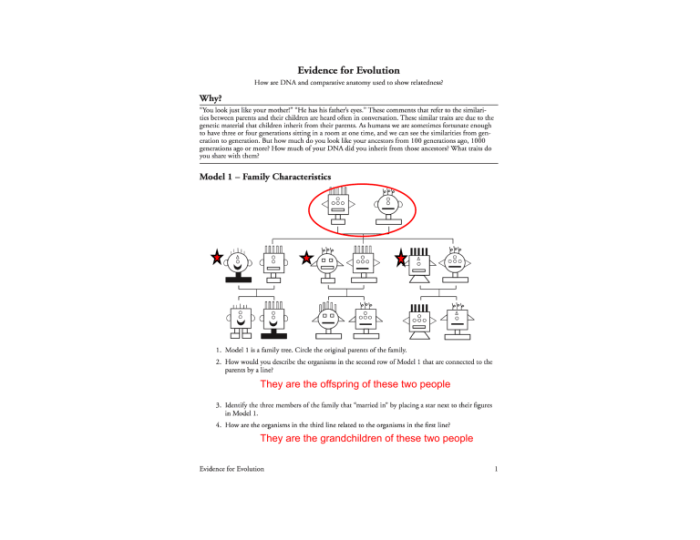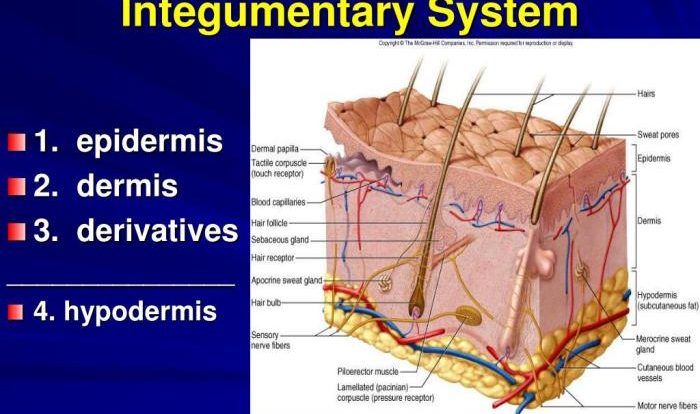The evidence of evolution pogil answer key provides a comprehensive guide to understanding the compelling evidence supporting the theory of evolution. This guide delves into the various lines of evidence, from fossil records to molecular biology, that illuminate the intricate processes that have shaped the diversity of life on Earth.
Through a meticulous examination of homologous and analogous structures, the fossil record, comparative anatomy, molecular biology, embryology, biogeography, and behavior, this guide unravels the evolutionary tapestry that connects all living organisms. It offers a profound insight into the mechanisms of natural selection, common ancestry, and the remarkable adaptability of life.
Evidence of Evolution in Fossils

Fossils provide a direct record of past life and offer valuable insights into the history of life on Earth. The study of fossils, known as paleontology, has played a crucial role in understanding the process of evolution.
One of the key lines of evidence from fossils is the presence of homologous structures in different organisms. Homologous structures are anatomical features that share a common evolutionary origin but may serve different functions in different species. For example, the forelimbs of humans, bats, and whales are all homologous structures, indicating a shared ancestry despite their diverse functions.
Another important line of evidence from fossils is the fossil record itself. The fossil record shows a gradual change in species over time, with older fossils resembling simpler forms and newer fossils showing increasing complexity. This pattern supports the idea that species have evolved from common ancestors through a process of gradual change.
Table: Homologous and Analogous Structures
| Homologous Structures | Analogous Structures |
|---|---|
| Forelimbs of humans, bats, and whales | Wings of birds and bats |
| Leg bones of humans and dogs | Flippers of penguins and seals |
| Eyes of vertebrates | Eyes of cephalopods |
Evidence of Evolution in Comparative Anatomy

Comparative anatomy involves the study of anatomical similarities and differences among different organisms. This field of study provides evidence for evolution by demonstrating the presence of shared anatomical features that cannot be explained by chance or convergent evolution.
Vestigial Structures
Vestigial structures are anatomical features that have no apparent function in an organism but are homologous to structures that serve a function in other species. These structures are remnants of ancestral structures that have lost their original function over time.
For example, the human tailbone is a vestigial structure that is homologous to the tails of other mammals.
Similarities and Differences in Anatomical Structures
Comparative anatomy also reveals similarities and differences in anatomical structures among different organisms. These similarities often reflect shared ancestry, while differences indicate adaptations to different environments and lifestyles. For example, the presence of a backbone in vertebrates is a shared feature that indicates a common ancestor, while the differences in limb structure among vertebrates reflect adaptations to different modes of locomotion.
Evidence of Evolution in Molecular Biology

Molecular biology, particularly the study of DNA and genetic analysis, has provided powerful evidence for evolution. DNA is the genetic material that carries the instructions for life, and it is passed down from parents to offspring. By comparing the DNA sequences of different organisms, scientists can determine their evolutionary relationships.
Role of DNA and Genetic Analysis
DNA analysis has revealed that all living organisms share a common genetic code. This suggests that all life on Earth has evolved from a common ancestor. Furthermore, by comparing the DNA sequences of different species, scientists can identify regions of similarity and difference, which can be used to construct evolutionary trees.
Molecular Clocks, Evidence of evolution pogil answer key
Molecular clocks are genetic sequences that evolve at a relatively constant rate over time. By comparing the molecular clocks of different species, scientists can estimate the time of divergence between those species. This technique has been used to construct a timeline of evolutionary history.
FAQ Corner: Evidence Of Evolution Pogil Answer Key
What is the significance of homologous structures in evolutionary studies?
Homologous structures provide evidence of common ancestry by exhibiting similar anatomical features despite serving different functions in different organisms.
How does the fossil record contribute to our understanding of evolution?
The fossil record offers a glimpse into past life forms, allowing scientists to trace the gradual changes in species over time and infer evolutionary relationships.
What role does molecular biology play in supporting the theory of evolution?
Molecular biology provides insights into the genetic similarities and differences among organisms, enabling researchers to construct phylogenetic trees and estimate evolutionary divergence times.

